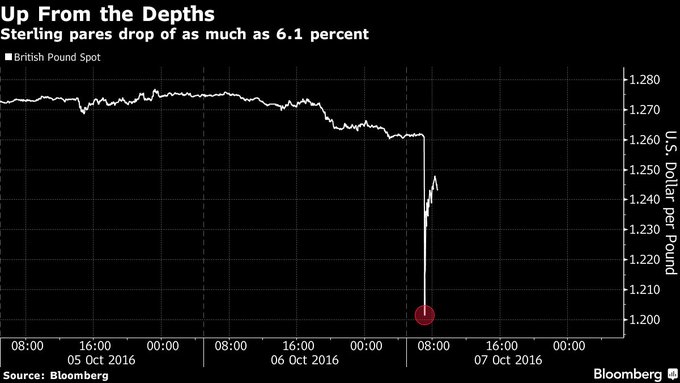[box type=”info” align=”” class=”” width=””]Enrico Onali, Aston University[/box]
Stock markets around the world suffered sudden, heavy losses on February 5 and 6. Following a 4.6% drop in the Dow Jones on the Monday, the Japanese Nikkei index fell by 4.6%, and European markets followed suit, with the FTSE 100 down around 2% in the first hour of trading on Tuesday. There was a rebound on February 7, but things remain turbulent. The phrase “when the US sneezes, the rest of the world catches a cold” comes to mind.
The main culprit seemed to be fears of inflation hikes in the US. If inflation is up, the government may soon start raising interest rates to contain it. And when interest rates increase, this reduces the return investors get on stocks, making them less desirable – hence the sell-off. This means that, historically, when interest rates rise, stock prices tend to decrease.
But markets do not only follow economic reasoning. They also follow human emotions and out-of-control algorithms. Here are some of the lessons from recent history’s big crashes.
Flash crash, October 2016
If a crash is unrelated to the economic fundamentals, it will quickly be corrected. This was the case of the flash crash in October 2016 when the pound plunged by 6% against the dollar in a mere two minutes of trading.
In this type of crash, the market mistakenly believes that the sell orders are driven by new information on fundamentals, while it may be due to a wrong algorithm in a computer program. Once the market understands that the sell orders did not originate from genuinely bad news, stock prices should rebound.
Black Monday, October 1987
The biggest and most famous stock market crash is known as Black Monday, and took place on October 19, 1987. Stock markets around the world were hit, with the Dow plummeting 22.6% – still its largest one-day percentage decline.
The Black Monday crash has been attributed in part to a large number of “stop loss orders” – orders that are in place to sell a security once it falls below a certain limit (to stop your losses). Computer programs, being used for large-scale trading, were relatively new to Wall Street at the time and they began to liquidate stocks as soon as loss targets were hit. A domino effect took place – when many investors submit stop loss orders simultaneously, this drags the price of stocks down, resulting in a crash.
Things got more complicated when computers were introduced. shutterstock.com
This alone does not explain the extent of the crash. New regulatory restrictions may also have caused a lack of liquidity in the market, pushing down the price of stocks.
Unlike with the 2016 flash crash, the market did not rebound immediately after the Black Monday crash. This suggests that it also reflected the fundamentals at play. Similar to the recent crash, the Black Monday crash was accompanied by expectations of interest rate hikes.
[ads1]
Bursting bubbles
If stocks keep rising in price, but their fundamental values do not also rise, then they are overvalued and a bubble forms. This could be a result of speculation or technical traders who focus more on the price history of the stock and what the market is doing.
The key here is that while many market participants may agree that stocks are overvalued, they may think that others are unaware of this and they can capitalise on it. But sooner or later there will be a correction, when stock prices fall in line with their fundamental value.
This bursting is often preceded by a sharp increase in prices. The sudden drop occurs when the market suddenly realises that they have been mispriced, thanks to some new piece of information – the straw that breaks the camel’s back.
There is also the effect of herd behaviour at play. Just as traders can buy stocks because everyone else is, traders can also follow the herd and sell, if they see everybody else doing so. This leads to a race to the bottom.
This happened with the dot-com bubble in the late 1990s, which involved stocks of high-tech companies. Optimistic individual investors are thought to have created the bubble, based on unrealistic expectations on the future performance of dot-com stocks. But the bubble burst once large institutional investors started selling off their dot-com stocks, making individual investors quickly change their mind and leading to large sell-offs.
When bubbles burst, stock prices will not rise to the previous level until the fundamentals improve again. There will be no immediate rebound, as the drop is a correction of a previous mispricing.
The latest tumble in global stock markets does not appear to be a full on crash – yet. Following the volatility of February 5, stocks did rebound, but it is hard to say whether the trouble is over.
[box type=”note” align=”” class=”” width=””]Enrico Onali, Reader in Finance, Aston University
This article was originally published on The Conversation. Read the original article.[/box]
